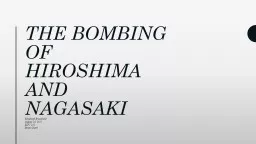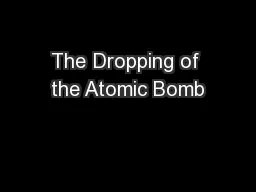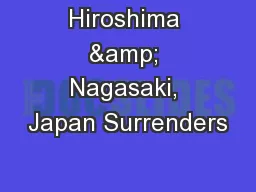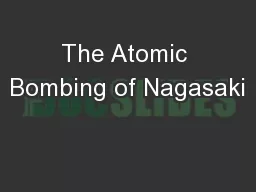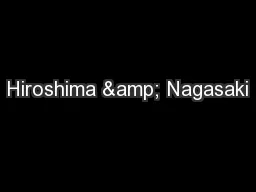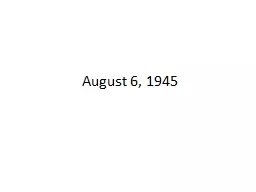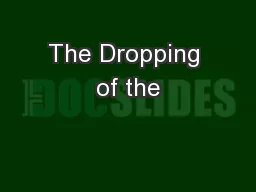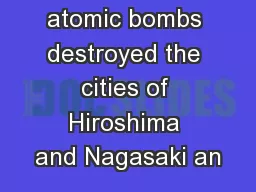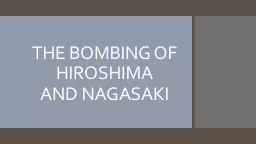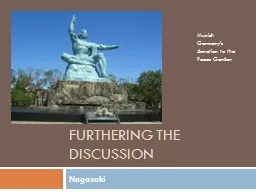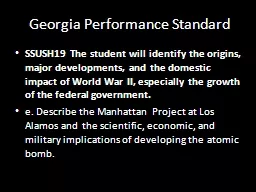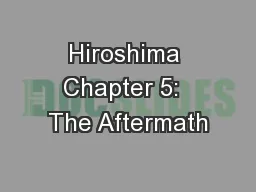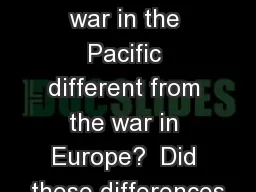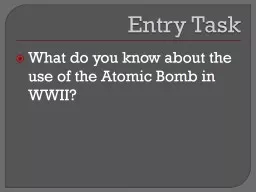PPT-The Bombing of Hiroshima and Nagasaki
Author : pamella-moone | Published Date : 2016-06-04
Elizabeth Breedveld August 23 2015 EDU 225 Brian Clark August 6 1945 August 9 1945 The day that America proved its nuclear strength to the world by bombing Hiroshima
Presentation Embed Code
Download Presentation
Download Presentation The PPT/PDF document "The Bombing of Hiroshima and Nagasaki" is the property of its rightful owner. Permission is granted to download and print the materials on this website for personal, non-commercial use only, and to display it on your personal computer provided you do not modify the materials and that you retain all copyright notices contained in the materials. By downloading content from our website, you accept the terms of this agreement.
The Bombing of Hiroshima and Nagasaki: Transcript
Download Rules Of Document
"The Bombing of Hiroshima and Nagasaki"The content belongs to its owner. You may download and print it for personal use, without modification, and keep all copyright notices. By downloading, you agree to these terms.
Related Documents

